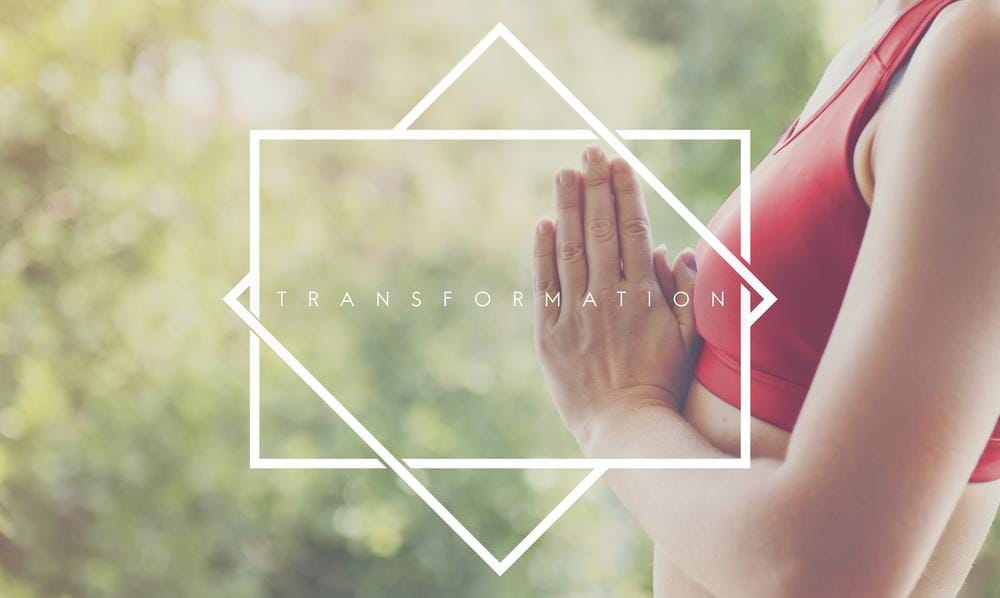AuthorNebo D. Lukovich Mindfulness simply means to consciously live in the present moment. You have to do any activity fully conscious of yourself and of the activity itself. Although many people don’t consider it as strictly spiritual, mindfulness indeed is a purely divine practice. It leads you to your True nature, while dissolving your inner conflicts softly and almost imperceptibly. Moreover, every conscious moment in the Now will gradually accumulate and make your whole life easier. It will abate or even prevent challenges. When mindfulness becomes your intrinsic way of living, you will enjoy every task, you will become light and, in a strange way, even transparent. You will start sensing some inexplicable joy and deep inner peace. You will feel love more and more, both to yourself and people around you. Mindfulness dissolves your inner conflicts softly and almost imperceptibly. Pure consciousness in everyday life will enable you to do any task perfectly. All your relationships will gradually improve in various subtle ways. You will be at perfect harmony with the world; your body will move lightly and flawlessly; your mind will function impeccably whenever needed, and all your actions will be done in the most effective way. Thus, if you drop a thing or stumble upon something unexpectedly, it is a clear message from your divine core: awaken, be present, feel your Heart! However, without regular meditation sittings, your mindfulness can easily lose its foundation. Therefore, it is highly recommended to practice them concurrently. You have countless varieties of meditation at your disposal. You can choose one of the modern types of “pure awareness” or “body awareness” meditations, for example like those presented by Eckhart Tolle. But, you can also stick to traditional approaches, like numerous Buddhist or Yoga meditations. You could also practice the loving-kindness meditation, which is, in my opinion, very important. Keep in mind, though, that some of these traditional methods require the practitioner to stick with all other practices within that particular system. It is essential to discipline yourself and have at least one, 15-minute meditation session every day. However, I would recommend to create an everyday habit of meditating twice a day, at least 15 minutes in the morning and the same duration in the evening. These sitting sessions should be scheduled to the same periods of the day, if possible. Meditation will release huge “amounts” of inner obstacles to any of your life goals, and will gradually erase all your negative tendencies, including laziness. What’s more important, the steady meditation practice will give you additional love, health, strength, calmness, creativity and smoothness in your life.
0 Comments
AuthorNebo D. Lukovich I had been trying for many years to anchor myself in the present by utilizing many methods originating from various spiritual traditions, but ultimately, to no avail. After a temporary success, there would always emerge a setback, and I would find myself at the beginning of the road again. Or it seemed so. Anyway, it was obvious that my strategy was not well-grounded.
I have learned the lesson the hard way. After many attempts and consequent failures, I have finally concluded that I must take a comprehensive approach: meditation, mindfulness and extensive inner work, concurrently. That was the cornerstone. Why should we take a wide-ranging approach to our personal transformation? Many inner structures in our psyche are opposing our life in the Now. Occasionally, due to their apparently cunning behavior, we could even say that they have some sort of consciousness or mind. As I said before, in many periods of my life I temporarily succeeded to anchor myself in the here and now, but it seemed that each time some unexpected event, person or inner issue expelled me out quickly from this blissful state. Therefore, if we don’t take into account those structures, we will always be getting back to the same old troubles and behaviors. We must face them, not through fighting, but through accepting, transforming and re-integrating them into our personality. Consequently, to get into a relatively stable state of abiding in the here and now, we should deal with these subconscious structures of our personality. Otherwise, they will continuously be preventing us in our efforts to be mindful. How to achieve this?
With mindfulness and meditation, we will be transforming ourselves from within, subtly changing our personality and its various parts. Whatever comes into our field of perception, we will reintegrate it through our Pure Consciousness or Presence, which has a divinely transformative effect. With the reintegration work, we will be changing ourselves outside, by using the various mental and emotional techniques for subconscious parts’ integration into our being. Mindfulness An excellent method to develop the practice of everyday mindfulness is to set up triggers for it. These triggers will actually be various situations or activities that you are usually engaged in during the day, so every time the condition occurs, it will trigger you to become mindful or fully conscious of yourself and the present moment. For example, your triggers could be: walking along a familiar path, cleaning teeth, opening or closing the door, sitting down or getting up from a chair, arriving at a specific location or even thinking a particular thought. You can actually make anything a trigger. Repeat these triggers as many times as possible, every time shifting your focus from the trigger to the present moment, until each trigger becomes habitual “launcher” of your mindfulness. Generally, you should try to be aware (i.e., mindful) of every motion of your body, sensation, texture, sound, taste, and smell. From time to time pause and direct attention to your sense of self. Sustain that state of self-awareness during every activity. You will enjoy every task; you will become light and, in a strange way, even transparent. Anything that distracts you, or pulls you out of mindfulness, you should accept as such, and not react to it at all (unless you are threatened somehow). Then continue with the activity, being fully conscious of it and yourself simultaneously. Every conscious moment in the Now will gradually accumulate and make your whole life easier and abate or even prevent challenges. Mindfulness dissolves your inner conflicts softly and almost imperceptibly. And whenever you are in that state of Presence, you will be at perfect harmony with the world; your body will move lightly and flawlessly; your mind will function impeccably whenever needed, and all your actions will be done in the most effective way. Meditation Without regular meditation sittings, your mindfulness can quickly lose its foundation. So it is very recommended to practice them concurrently. You have countless varieties of meditation at your disposal. You can choose one of the modern types of “pure awareness” or “body awareness” meditations, for example like those presented by Eckhart Tolle. But, you can also stick to traditional approaches, like many Buddhist or Yoga meditations; some of them can indeed be suitable for you. Keep in mind, though, that some of these traditional methods require the practitioner to stick with all other practices within that particular system. One example of “pure awareness” meditation technique is the following: First, you relax, using one of the many relaxation techniques. Then ask yourself: “What will be my next thought?” Then just wait for the next thought, being curious and alert. This will easily bring you into Pure consciousness, a state of Presence. Whenever something comes into your mind and disturbs your Presence, accept it wholeheartedly and go back to your question which will return you to the Presence. After some practice, you will be able to enter the state of Pure consciousness without using any questions. The goal is merely to stay in this thoughtless state as long as possible. It is essential to discipline yourself and have at least one, 15-minute meditation session every day. However, I would recommend creating an everyday habit of meditating twice a day, at least 15 minutes in the morning and the same duration in the evening. These sitting sessions should be scheduled for the same periods of the day, if possible. Meditation will release huge “amounts” of inner obstacles to any of your life goals, and will gradually erase all your negative tendencies, including laziness. What’s more important, the steady meditation practice will give you extra love, health, strength, calmness, creativity, and smoothness in your life. Reintegration of inner parts If we really intend to achieve permanent results in our personal transformation, the work on our subconscious structures must be comprehensive and continual, always accompanied with meditation and mindfulness. There are countless approaches to this subject also. The mainstream psychology is one of them. It is scientifically approved and confirmed, and consequently pretty safe. But it’s also very slow. On the other hand, there are many alternative methodologies, which could be much more efficient and faster but burdened with higher risk. It’s up to you to choose. However, I will offer here one of these alternative approaches to personal transformation, the Reintegration System, which is a methodology rooted in psychology and holographic model of reality, which has proven to many people as being systematic, yet the extremely effective method of human development. Here is the list of our personality’s aspects that we should deal with in accordance with the Reintegration System’s methodology:
These aspects are parts of our personality that merely need the most of our attention in our inner work. You may find that some of these parts are actually sub-sets of other, more general ones. We could classify, for example, our desires, fears, and guilt under the umbrella of ‘emotions’, or we might instead assume that emotions are only part of traumatic memories; beliefs can be habitual thoughts backed by emotions, etc. Each could be right or wrong, depending on your point of view, but for our purposes they are listed according to practical reasons. So, what to do with all these elements of personality? In short, we should always face them, accept them wholeheartedly, and finally, transform and reintegrate them entirely into our being, using an appropriate technique. We should never fight them! All these aspects have deeply hidden genuinely positive intentions for us, but those intentions have been gradually distorted into apparently negative behavior during extended periods of time, because of numerous misconceptions, limited perception, and challenging environment. A lot more on this you can find at www.re-integration.com, or in “Inner Peace, Outer Success” and other Reintegration books. Additional note on inner work For some people, though, this three-fold work is not necessary for achieving the lasting bliss. Indeed, some relatively rare individuals have mysterious inherent abilities and preconditions for attaining the permanent happiness or Enlightenment with little or no effort at all. They have done most of their inner work probably in other incarnations. However, we must not rely on such hopes. The determined, persistent, yet profoundly joyful effort, is definitely recommended as our final choice. |
Please note that most of the articles have a "Read More" break, which is sometimes hardly visible.
It is located at the bottom of visible part of the article, on the right side. To continue reading the article, click on that link. This page may contain affiliate links meaning we earn a commission if you use those links.
We only recommend pages we appreciate and trust. Archives
March 2023
Categories
All

|
For guest posts or placing ads on our website, please use the contact form on the 'About/Contact Us' page.




 RSS Feed
RSS Feed

